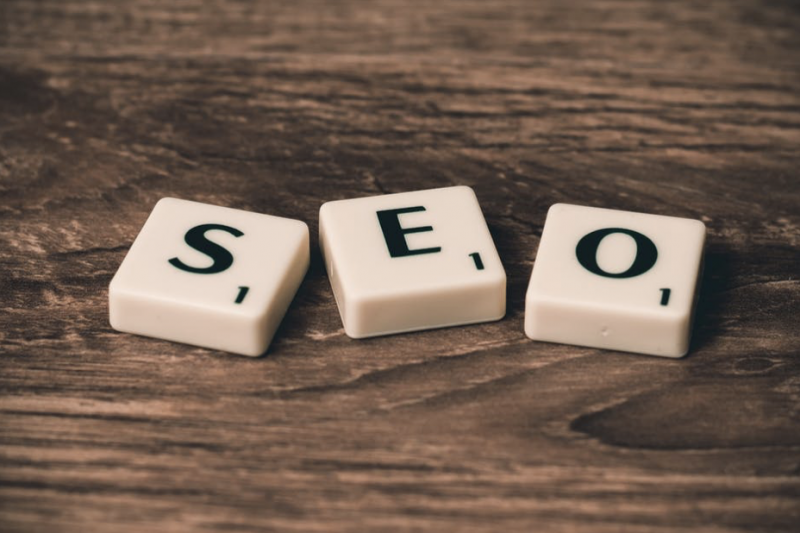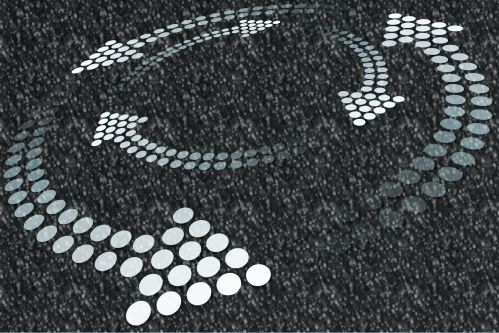
Search engine optimization is an ever-developing practice, which means that the tactics you used a few years ago might not work today. Where a site owner may have once been able to throw a few relevant keywords into a post and rank on the front page, a lot more is required these days.
We’re going to help you understand one piece of the modern SEO puzzle in this article. We’ll discuss the difference between onpage SEO and offpage SEO, helping you understand what these concepts are and why they matter.
After reading, you should have a better idea of how SEO professionals operate and what it takes to succeed in modern SEO.
What’s the Difference Between Onpage and Offpage SEO?
For the purposes of this article, we’re going to assume that you have a fundamental knowledge of what SEO is and how it works.
In other words, you should know what a search algorithm is and how it works, the goal of ranking in various searches, and the fact that there is additional effort required to rank in those searches.
On-page and off-page SEO aren’t complicated ideas. In fact, they’re ideas that make one of the most basic distinctions in the practice of optimization. If you have a little SEO knowledge already, you’ll probably be aware of a number of the terms we use in this article.
Even if you’re aware of some of the items below, it can be helpful to understand how they fit into the context of on/off-page optimization and why they’re important in those domains.
Before we get into the specifics of each area, let’s discuss why it’s important to have both on and off-page SEO.
Other factors that can profoundly influence your website’s domain authority include the website speed, the quality of the content, social signals, and the age of the domain. To figure out the domain authority score of your site or competitor, you can visit smallseotools.com and use its hassle-free utility, domain authority checker. This tool will
show you the exact DA score of any URL you enter in it. By checking the DA with this tool, you will be able to assess how better or worse your on-page and off-page SEO is doing currently. After that, you can put more effort into SEO to improve the domain authority.
Why Do We Need Both Types of Optimization?
Search engines have advanced to an extremely sophisticated point. While it seems as though it would be enough to analyze a page’s copy, there are simply too many multifaceted websites to use one or two ranking factors when it comes to search results.
There are something like 300 hundred ranking factors used in each search, some off-page, and some on-page.
What Are On-Page and Off-Page factors, Exactly?
On-page factors are things like keywords, meta-descriptions, images, alt-texts, and internal links. They are, as the name suggests, the elements of your site that exist within the confines of your page.
Off-page factors are all of the optimization elements that exist outside of the parameters of your site. Things like external links, business reviews, social media elements, and domain authority.
Part of the reason that engines have evolved to incorporate off-page factors is the fact that the internet has changed drastically in the last 15 years. Where the internet was once relatively limited, it is now a vast, booming network of competing sites that have different metrics for ranking relevancy.
The network of sites you exist in says a lot about how relevant you’re going to be in a user search. Additionally, your social media platforms will play heavily into the actual traffic that moves to your site.
We’ll discuss more off-page factors in a bit, but let’s start with on-page ranking factors.
On-Page SEO Factors
You’re naturally going to begin building your SEO campaign with on-site factors. We’re going to explore some of the most important elements of on-site optimization and cover why they’re important.
1. Keyword Optimization
It could be argued that keyword optimization is the foundation of a page’s SEO. We aim to match the keyword to the user search, which is the first point of optimization.
Without the user search, there would be no reason to optimize.
It’s essential that you do quality keyword research before you put the time into optimizing any page. You may think that you can assume what users are searching for, but this is simply untrue.
Google Analytics is a solid foundation for your research, but there’s a myriad of other keyword research tools you can utilize. Search trends for your demographic are always going to change from time to time, so it’s important that you stay up on terms in your niche.
Additionally, you should try and optimize for terms with high volume and low competition. Ideally, you would have little-to-no competition for a keyword, but this is rarely the case. Whichever term is most relevant to you, has the lowest-quality competition, and the highest search traffic should be optimized for.
The next step is creating content to match those terms, which is the next piece of on-page optimization.
2. Content Creation
It’s important that you post regular content to your site. This content should be a direct response to your keyword research.
When there’s a trending term in your niche with low competition, you should aim to meet user needs with a piece of content that is about that subject and keyword-optimized for the search term.
Any page needs content, and written copy is an obvious component of on-page optimization, but it’s important to note that you should have an active blog or web-component that you can post regular content through.
3. Meta Descriptions
When you browse through the search results, the meta-description is the portion that sits just below the link.
They tend to be 300 characters long and should include your target keyword. Meta-descriptions should also include a compelling sell of the link that you’re trying to get clicked.
You can typically craft your meta description in WordPress or whatever content management system you use on your site. If you don’t include a meta description, Google will take the first 300 characters from the copy on the page.
This is a little detail, but it can go a long way if the competition is tight for a particular keyword.
4. Alt Text
Another piece of optimization that serves as the first step in ranking for image searches.
An “alternate text” is the text used to describe an image. It sits within the image to serve as an aid for visually impaired users who may not be able to make out what the picture is.
At the same time, search engines use alt text as a way to identify the relevance of an image. Make sure that you place your target keyword in the alt text of images on each respective page. This will set you apart from a lot of sites that don’t pay any attention to the alt text, thereby forgetting to optimize for image searches.
5. Site Architecture and URL Structure
Another important piece of on-page optimization is the layout of your website. Site architecture refers to the arrangement of the pages on your site. The more logical and orderly your site, the easier it will be for users to navigate it.
Consequently, an organized site is easier for search engines to crawl as they’re creating their index. If your site is a mess, that won’t bode well for your chances in the search results.
The arrangement of your site doesn’t just have to do with the front pages and aesthetic elements. Your internal linking structure is also important.
Internal Linking and Pillar Pages
An internal link is one that exists on your site and moves the user to another page within your domain. For example, you might have a call to action that states “check out our blog” with a link to your blog’s home page.
When it comes to internal linking structure, you’ll want to create tertiary pages and pillar pages. Think of pillar pages as those that you want users to end up on. This typically means whichever page will lead to your intended conversion.
So, sales pages, subscription pages, etc. Tertiary pages are the day-to-day content that you create in response to your keyword research. If you can create regular content that leads back to a few essential pages of your site, that arrangement will lead to an organized, well-optimized site.
You should also make sure that your URLs contain keywords and are as simple as possible. This is another way to streamline your site so that it fits directly into the mold of your target keyword.
Off-Page SEO Factors
There are a lot of factors that go into off-page SEO. “Off-page” essentially refers to anything that affects your web traffic that doesn’t take place directly on your page.
You could even consider in-store promotional pushes if they direct users to your site. That said, there are a few essential pieces of optimization that take place off-page.
1. Links to Your Site
Your site exists in a network of links that reflect your authority in a particular niche. So, if you have links to your site from a number of popular sites, this will suggest your importance to search engines. These links are typically referred to as “backlinks.”
Gathering links is a difficult thing to do, though. You will naturally accrue links as your site builds in popularity, but you need links to get popular in the first place. Doing this can get a little tricky.
A popular method of gathering backlinks is to reach out to other sites. You can make the suggestion that your page will be of use to another site’s users, and there’s a chance that the site will include a backlink.
You may also offer to write a blog post in exchange for the opportunity to link back to one of your pages. Unfortunately, there aren’t a lot of surefire ways to get backlinks without putting a little work in.
2. Social Media Efforts
Social media doesn’t have an explicit effect on how search engines rank your site. In other words, of the 300 ranking factors that engines use, social media presence is not one.
At the same time, it’s impossible to deny the fact that a booming social media presence will drive a lot of traffic to your site. You can push blog posts on social media, direct users to explore your site, and promote products and services that can be found on your website.
When users are directed back to your site, they engage with it, make purchases, review it, and more. All of those indicators tell search engines that users enjoy your site, moving your search rankings up as traffic increases.
With all of that in mind, social media is a clear off-page search factor. You can boost your social media presence in a number of ways, including PPC marketing.
Pay-per-click marketing is an excellent way to reach specific audiences on different social media platforms. We would get into the particulars of that process, but we’ll save that for another article.
3. Domain Authority
Domain authority refers to the perceived value and strength of your site. Search engines assign you a number from 1-100 that indicates how strong your site is.
As your number increases, you will rise in search rankings. Things like backlinks, time under one domain name, and sound site qualities will all improve your domain authority.
You can greatly increase this number by ensuring that your website is free of dead links, faulty code, and other technical issues. You should also ensure that your on-page optimization is sound through-and-through.
Those back-end particulars can be a little difficult to perfect if you don’t have the training, though. Working with a team of professionals like the ones at SEOexplode may be the best way to ensure that your domain authority is as high as it can be. If you want to check your website’s SEO score, you can use free online tools to do so.
Things to Keep in Mind
Understanding the difference between onpage and offpage SEO is the first step in moving forward with great optimization. It’s important to keep in mind, though, that these things take a while to take root.
Your on-page optimization is pretty straight-forward; there are guidelines and clear answers as to what you should do and why. Off-page optimization, as you can imagine, is a little more difficult to cultivate and takes some time.
It’s important that you keep at it, though, because results will come after some time.
Need a Little Help Getting Started?
There’s a lot to learn when it comes to SEO. Knowing the difference between onpage and offpage SEO is just one of the initial things you have to know to see exceptional results.
Explore our site for more information on SEO, digital marketing, and how to find the kind of traffic that will set your business apart from the competition.

Founder Dinis Guarda
IntelligentHQ Your New Business Network.
IntelligentHQ is a Business network and an expert source for finance, capital markets and intelligence for thousands of global business professionals, startups, and companies.
We exist at the point of intersection between technology, social media, finance and innovation.
IntelligentHQ leverages innovation and scale of social digital technology, analytics, news, and distribution to create an unparalleled, full digital medium and social business networks spectrum.
IntelligentHQ is working hard, to become a trusted, and indispensable source of business news and analytics, within financial services and its associated supply chains and ecosystems






























